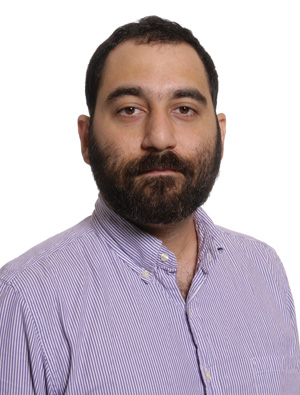Simplifying Computer Programming
As a third year Assistant Professor in the Interdisciplinary Learning and Teaching (ILT) Department at UTSA, Matthew Berland is working to bring computational thinking into the lives of students in a practical way. He is finding that ILT is a welcoming place for him to do that work as it sensibly balances teaching and research. In fact, Berland routinely incorporates his research into his classes at UTSA.
Berland and his team recently won a $474,000 grant from the National Science Foundation to develop tools that will help non-computer programmers apply computational thinking strategies to practical problems. “The money was offered as a competitive grant by the Engineering directorate at the NSF,” Berland explains. The funding affords Berland an opportunity to develop software, strategies, and assessments that he believes will make his research more broadly useful.
Berland states, “As with any discipline, neither computer science education nor engineering education are perfect. My Co-PI on this project is UT Austin Associate Professor of Curriculum and Instruction Taylor Martin, and we have identified that many students in computer science felt that their education was isolated or disconnected from their everyday lives. What most people don’t realize is that computation, and computational thinking, are not necessarily always best exercised in front of the box on your desk.”
Berland and Martin began working together in an effort to determine what they could do to fix that disconnect by asking, “What can we do to open the space of how people think about programming? How can we do that in a context of a really motivating, gamelike learning environment?” They decided to build a programming game for the iPhone and iPod so that both students and consumers could learn to program with their phones. “As programming becomes mobile, it also becomes more social. It can, therefore, be helpful in the classroom, but, as a learning tool, it can be taken out of the classroom, as well,” he adds.
Berland and Martin developed an iPhone app, IPRO, in which learners create virtual robots to play soccer. In IPRO, students can program virtual soccer players in a matter of seconds, rather than hours, by using a simplified visual programming language. Berland explains, “It’s like boom! I’ve got an idea, I’m going to try it out, and then I can show my friends to see what they think.” Berland has recently written papers suggesting that, after only an hour of working with IPRO, novice middle school and high school students can create relatively complex computer programs.
Berland and Martin argue that the success of IPRO is partially attributed to the fact that users are able—and encouraged—to move around while they work, which helps them learn how to connect their computer programs to the real world. Berland states, “We are designing these programs on mobile devices so that students can interact with their programs by thinking about the ways that they move in the real world. This makes the programming easier; the term we use is ‘embodied cognition.’”
When asked what he felt prompted the Nation Science Foundation’s interest in his research, Berland says that “There are a lot of people who are interested in broadening the audience for computer science and engineering. I’m not expecting that everyone who plays the game will become a computer scientist, but I want to offer the tools to introduce students to think computationally in a way that doesn’t take the form of traditional computer programming.” Berland states, that the initial “test pilots” ranged between 6th and 12th grade. “The idea is to approach students at a point when they could just be beginning to understand programming.”
Berland acknowledges that the project is still in the development phase, but is confident that the grant will give the team (including UTSA doctoral and master’s students) a chance to work out any initial problems. He explains, “We are using a methodology called ‘design-based research’ in which you design from research, and you research through design. They can feed off of and inform each other. Therefore, it isn’t us just producing something beautiful and handing it to students, but really working together with teachers and students to build the best tools and curricula that that fit all of our learning goals.”


